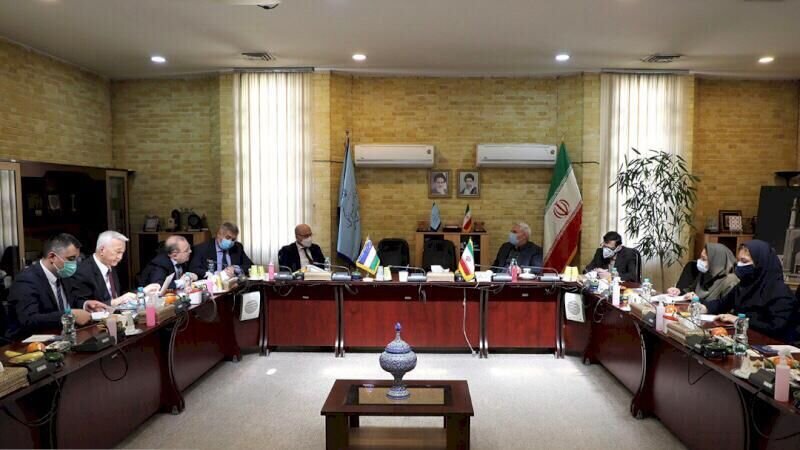Tehran, Tashkent discuss cultural heritage ties

TEHRAN – The Islamic Republic of Iran and the Republic of Uzbekistan have held talks to widen ties in the arena of cultural heritage.
Iran deputy tourism minister Mohammad-Hassan Talebian met on Wednesday with Uzbekistan’s deputy minister of foreign affairs, Farhat Sadiqov, to explore possibilities for deeper cooperation on museum affairs as well as preserving and restoring historical monuments.
Based on the development of cultural relations between the two countries and the capacity to cooperate in specialized fields of cultural heritage, Talebian said that both sides could exchange views and experiences on preparing joint dossiers on tangible and intangible cultural heritage for global registration as well.
Setting up tours during Noruz (Iranian new year holidays, which is also celebrated in some other countries in the region) as well as tourist tours for visiting the Silk Road and restored historical structures could also promote tourism in both countries, he added.
For his part, Sadiqov asked for ease of visa issuance between the two countries in the field of tourist exchange in the shortest possible time.
Referring to the establishment of an Islamic research center in Bukhara and a center for Islamic civilization in Tashkent, and conducting a research project on Quranic and Islamic manuscripts by Uzbek scholars and students, he called for assistance of Iranian masters in these projects.
There are 740 museums across Iran, some half of which are associated with private collectors or various institutions. Some three million historical objects are currently being kept in Iranian museums which are affiliated with the tourism ministry. Iran is home to one of the world’s oldest continuous major civilizations, embracing settlements dating back to 4000 BC.
The name of Iran, formerly known as Persia, mostly conjures up the first Persian Empire, ruled by the Achaemenids (550 – 330 BC) and sites such as Pasargadae and Persepolis. However, there are tens of prehistorical sites as the Burnt City in Sistan-Baluchestan, Tepe Sialk in Kashan, Susa and Chogha Zanbil in the Khuzestan province, and Ecbatana in Hamedan which predate the Achaemenid period.
From a wider point of view, Iranian history can be divided into Pre-Islamic and Islamic eras. The Medes unified Iran as a nation and empire in 625 BC. The Islamic conquest of Persia (633–656) that put an end to the mighty Sassanid Empire (224–651) was a turning point in the history of the nation.
ABU/AFM
Leave a Comment